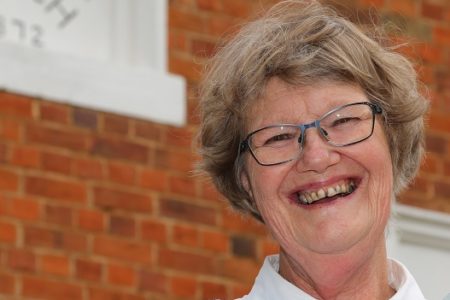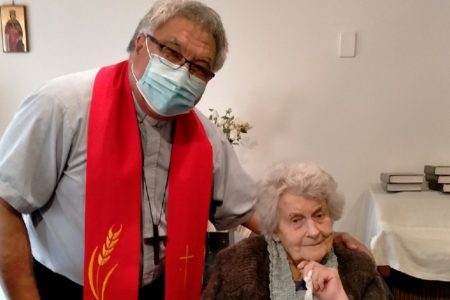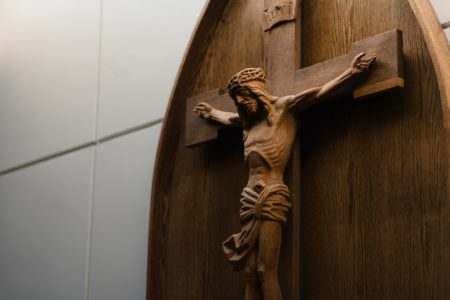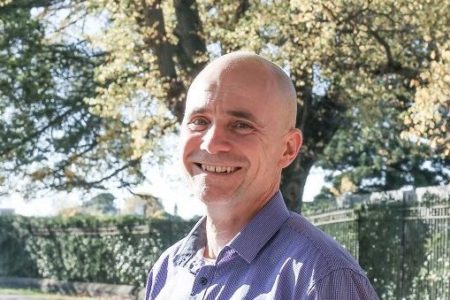Rev Bob Thomas
As a born scientist, “but that I can’t believe!” has been my usual response to so many of the beliefs that some would claim are required of Christians.
I can remember arguing with my Sunday School teacher at age seven that the story of Noah and the Great Flood was impossible, and as time went on, I added to my growing list of absurdities the virgin birth, the Transfiguration, the Ascension, numerous so-called miracles, e.g. walking on water, and, of course, rising from the dead.
‘But in 1st Corinthians 15:12-17, Paul proclaims resurrection as the essential element of our faith, does he not?’ Yes, but this is only a problem if one equates ‘resurrection’ with rising from the dead.
In another letter, Paul wrote, “For neither circumcision nor uncircumcision counts for anything, but a new creation.” (Gal. 6:15)
Perhaps for Paul these ‘essentials’, resurrection and new creation, are synonymous. Paul, a transformed Saul, experienced the New Creation of which he wrote. He experienced the death of his Old Being and was resurrected as a New Being.
Paul wrote in the Second Letter to the Corinthians, “If anyone is in union with Christ, he is a new being; the old state of things has passed away; there is a new state of things.” (5:17)
Paul knew resurrection personally.
Anthony de Mello tells the story of the wise Master who explained to his frustrated disciples, “You have yet to understand … the shortest distance between a human being and the truth is a story.”
Like this Master, and like Jesus, the Gospel writers used stories to bring us closer to the truth.
We’re missing the point of the Easter story if its truth for us hinges on an historical dead body becoming alive. If so, Easter joins the list of absurdities proclaimed by the ‘Old Time Religion’.
But if Easter is about radical transformation akin to new life arising from death, now, then not only can I believe, I can shout, “Hallelujah!”
At the bottom line, no religion, no religious belief, including belief in the bodily resurrection of Jesus, matters one whit, but with Paul I can proclaim the Easter message that there is a New Creation, and we are asked to participate in it.
Rev Natalie Dixon-Monu
I grew up in a Pentecostal church, a church that viewed suffering as a sign that someone had sinned or whose faith was lacking.
In their view everything was able to be healed as long as you just prayed hard enough. There was no space for the crucified God in their faith discourse. Suffering, sickness and trauma threatened their faith, so they demonised it.
I was a struggling teenager at this time, using alcohol and marijuana to try and make sense of the emotional and sometimes physical violence being perpetrated in our family home by my father, a Christian man in this community.
My mother’s suffering was ignored by the church and even worse painted as a consequence that she must have done something to cause it.
I knew that there was something not quite right with what was being preached, so I read my Bible. In it I discovered the crucified Christ. One who was beaten, betrayed and persecuted not because he had no faith but because he chose to incarnate God’s presence in ALL of our human experiences.
My faith came alive as I discovered that the most powerful story was not that of an unblemished resurrected Christ but of a crucified Christ who could be found sitting beside me in the dark hole I had found myself in.
When I found God there, only then was a path to transformative resurrection possible.
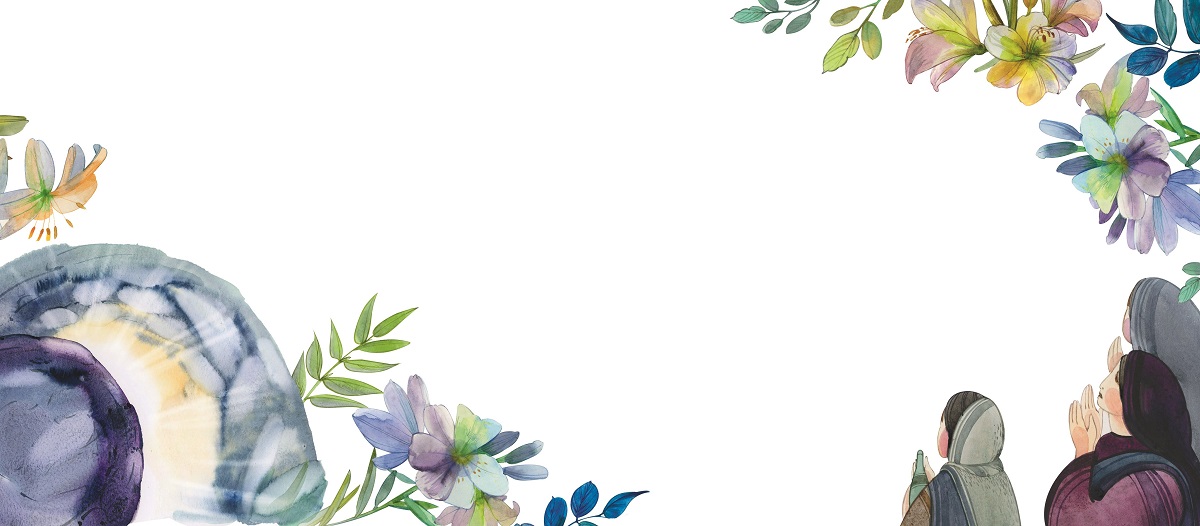
“Resurrection is about giving space to allow the seed of a new life to take hold in the fertile soil of our broken souls,” writes Rev Natalie Dixon-Monu.
‘In the tomb’
I can’t see anything.
It’s so dark in here.
But yesterday I saw too much.
Too much violence.
Too much betrayal.
Too much suffering.
Now I see NOTHING.
I am in nothingness.
Am I dead? Or alive?
I feel nothing, I see nothing.
Am I nothing?
What happens next? I honestly don’t know.
So, I wait ….
Then I remember there is something in the nothingness. It comes backs to me now.
A promise. Yes, a promise.
‘Emmanuel, God with us”
“I came to bring light into the darkness”
So, I will wait and hold fast to promises not yet realised.
I will hold fast onto these fragile whispers that this nothingness may pass.
I wait in the darkness, but I am now no longer alone.
‘Resurrection’
Touch my hands. Believe.
Believe not that everything can be fixed, recovered, made well.
Believe rather what my scarred hands show. That in suffering God is present.
My scars tell a story. They bear witness to my love, my willingness to meet you in your most difficult spaces, and be present, and that presence breathes life into death.
Resurrection is not leaving your suffering behind, covering your scars, striving to be whole.
Resurrection is about giving space to allow the seed of a new life to take hold in the fertile soil of our broken souls.
There is no resurrection apart from brokenness and they should never be separated.
Resurrection must bear the scars of suffering for it to be authentic.
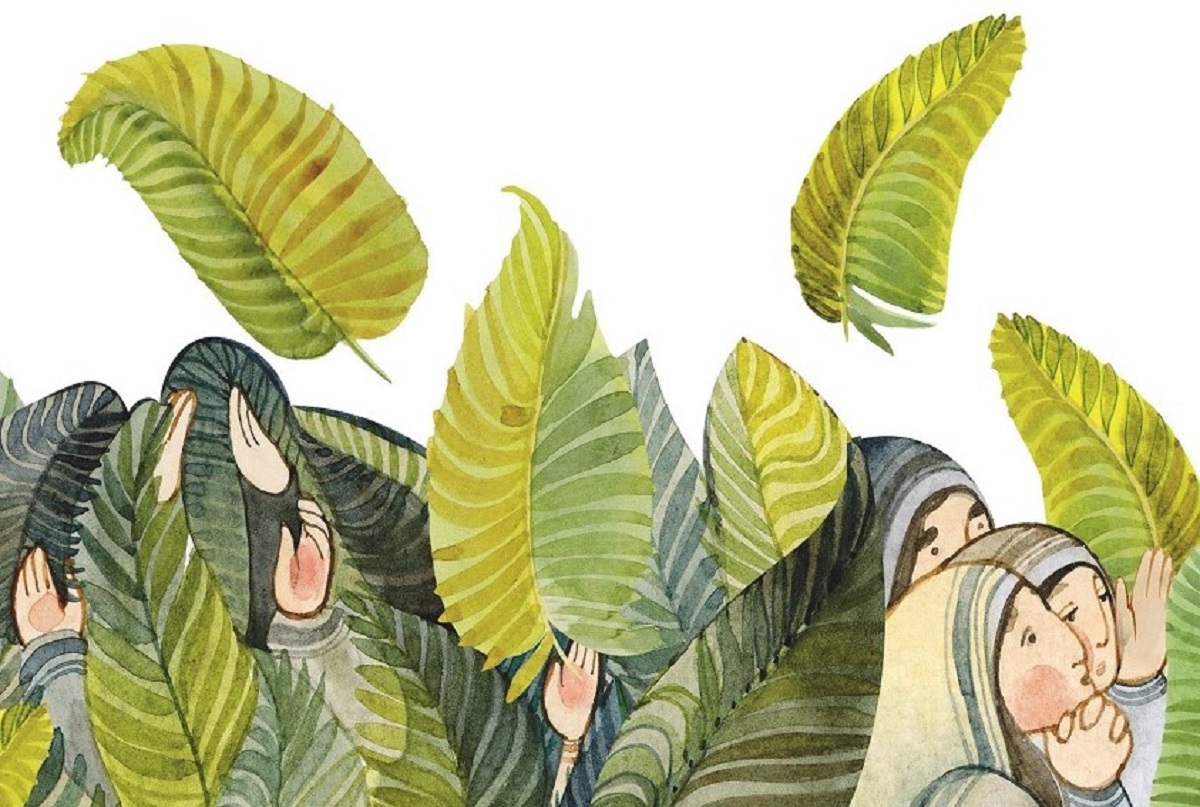
“Jesus is still recruiting for the Kingdom of God now, where everyone is welcome to the table and to the bread,” writes Rev Deacon Jenny Preston.
Rev Deacon Jenny Preston
I can remember 1950s smoked cod, Easter eggs, Easter daisies, the Dawn Service on Springmount, and Paul’s three missionary journeys in Asia Minor.
I can remember my first Easter camp in 1964, and a strong camper carrying the cross up the steep hill at Burnside, Tolstoy’s Shoemaker, and a camper’s sermon Easter Day from Matthew 24 (I married him in 1967).
‘Jesus said to them, remember, I am with you’: ego meta humon eimi.
Matthew’s Jesus saying to us: you are within the very life of God: ego eimi is the Greek version of YHWH.
I can remember leaving camp and the camp president saying, ‘remember this mountain top experience’.
I know that crucifixion was a crude, degrading, humiliating death, like rape or torture, and Jesus was killed because he was a radical critic of the way Rome and temple authorities ran the known world and he was getting a following, and they didn’t want a riot.
An important word for me: remember what he told you: the four gospels all have stories about women remembering – Mary Magdalene, Mary mother of James, Salome, the wife of Cleopas. Hope began with the murmur of these women on a Sunday morning at very early dawn, women who had travelled with Jesus and the disciples to Jerusalem, healing and teaching about the Kingdom of God.
When all the stories of appearances were put together, they listened to each other, and became the communities of the early church, enfleshing their Gospel for their own community as they lived into Jesus’ passion, his passion for bringing about the Kingdom, the Kingdom on earth, for a world turned upside down by their passionate conviction, intensity and desire.
Recently I’ve been preaching on the Day of Mourning, and the Beatitudes, and my remembering took me back to Liberation Theology by Gustavo Gutierrez; recently honoured by the Pope for his preferential option for the poor and discarded of society.
Jesus is still recruiting for the Kingdom of God now, a Kingdom where everyone is welcome to the table and to the bread, as we continue to find ways to overthrow the humanly created world of injustice and violence to remake it into a world of justice and non-violence.
‘I have come that they may have life, life in abundance’: John 10: 10.
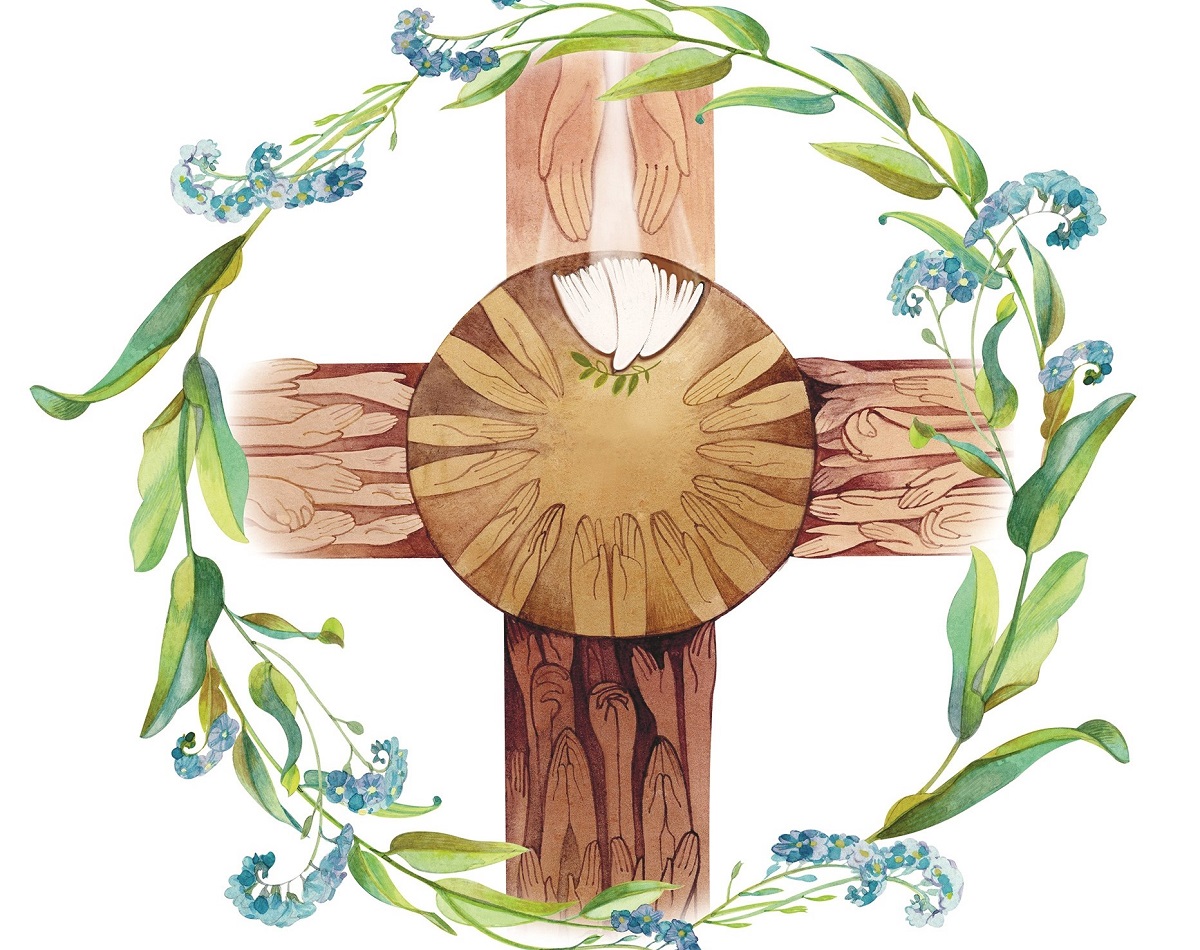
“The wonder of Easter morning reminds me that there is always hope,” writes Rev Sherrin Jackman.
Rev Sherrin Jackman
What Easter means to me is captured by two images in my mind.
For a time I was ministering in Scottsdale, in north-east Tasmania. Around Easter, a large wooden cross was placed on the lawn outside the church. It remained bare until Good Friday, when a black cloth and a barbed wire crown of thorns was draped over it.
As I reflect on that image, I wrestle with the suffering that it represents and its meaning – for Jesus, for me, for all humanity. I feel the gloom and sadness that the disciples must have felt on Friday and Saturday, as hope was snuffed out like the flame of a candle.
I ponder the depth of commitment and love that lead Jesus to suffer on that cross. I wonder that God in Jesus could truly love me that much, as to die in my place to bridge the gap between me and God.
On Easter Sunday, the black cloth was replaced by a white or yellow one, and instead of the barbed wire there was a bunch of flowers and greenery.
As I reflect on that image, my heart fills with joy and wonder. Against all expectations, Jesus was raised from the dead. From death and despair, springs life and hope.
I am reminded that nothing can quench the love of God, and nothing can separate me from God’s love in Jesus. I am reminded that with God, nothing is impossible.
No matter what situation I may be in, the wonder of Easter morning reminds me that there is always hope and that life, in some form, can still come out of seemingly hopeless situations.
What does Easter mean for me?
It is a time to ponder the events of Jesus’ death, burial and resurrection. A time to wonder at the depth of its meaning, as life comes out of death. A time to marvel and be deeply thankful for the mysterious, tenacious, self-giving, transforming love of God; not just for me, but for the whole world.
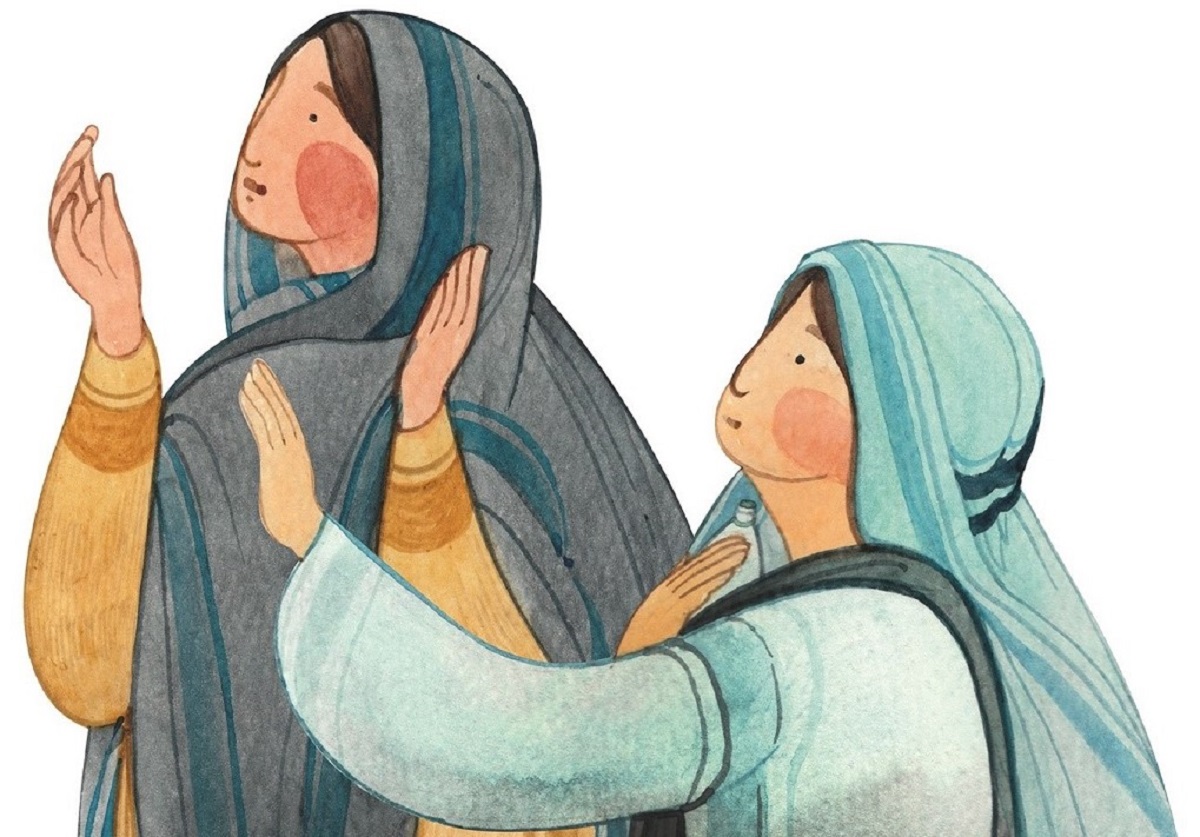
“We rejoice because we know that love wins, because today reminds us that the light can break through the deepest darkness,” writes Rev Matt Cutler.
Rev Matt Cutler
When it comes to the experience of Lent and Easter, I deeply value the season we have been gifted to take us through this path of transformation. For this annual mini-pilgrimage as followers of the way, the deeper we go into Lent the more we witness autumn’s shedding.
For me this helps me appreciate something I hold dear: that the Easter event is not merely an event of 2000 years ago, but is actually the great and continuous movement of the Spirit.
It is a heartbeat that governs all of life and all of faith, that of continual death and renewal, an endless dance of dying and rising. In autumn, as in Easter, we appreciate that the death we are surrounded by proceeds a greater life to come.
In the autumnal letting go, a great compost is taking place. Old life is breaking down to enable a richer more fertile life to emerge. In the dying, new seeds are being scattered that will allow future growth.
Because the Spirit for me is the source and life force of all things, Easter is not a one-time show, but the way the Spirit eternally works.
It is therefore the pattern of transformation in my own life and indeed the very pattern of the cosmos. This season therefore, is both a celebration of an event, but also an invitation into a journey that is always taking place and one I am invited to more fully participate in.
As leaves fall around us, and as we continue to be surrounded by signs and stories of death and decay, I tend to journey with questions such as: what do I need to die to, that new life might rise and spring forth? What is breaking down so that fuller and freer life might open up? How might God, the Spirit of life and ground of all being, be birthing new life through this and every apparent death?
We have walked through this Holy week, hearing stories of betrayal, denial, conviction and then crucifixion.
We lamented together on Good Friday amid dashed dreams and the crucifixions that continue to surround us. But today we rejoice because we know that love wins, because today reminds us that the light can break through the deepest darkness.
Today we rejoice because death is not the end.


